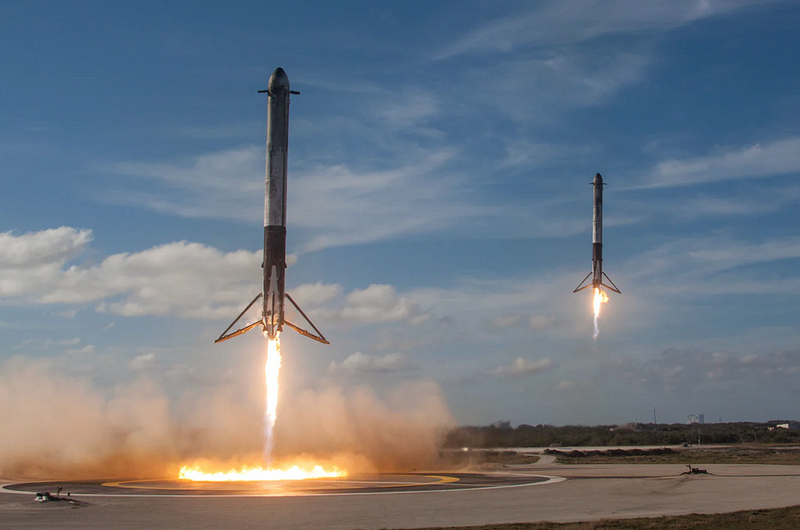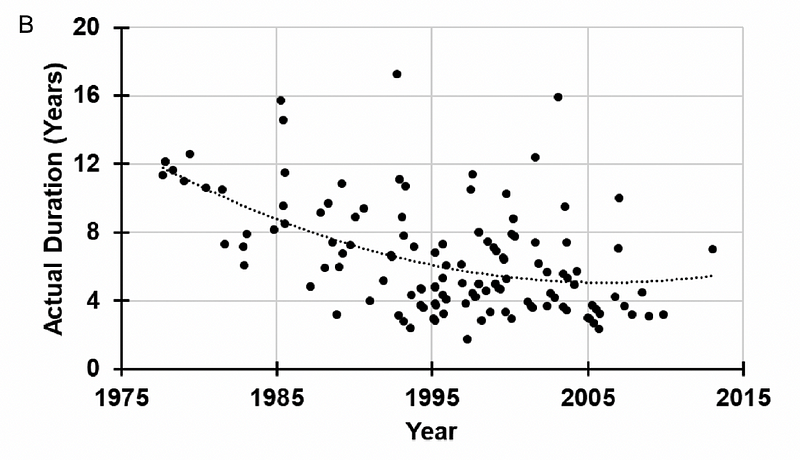SpaceX vs. NASA: A Comparative Analysis of Speed and Innovation
Written on
Chapter 1: Speed to Market
In the realm of aerospace innovation, SpaceX outpaces NASA in speed-to-market and iterative improvements. According to research by Atif Ansar and Bent Flyvbjerg, SpaceX's projects typically take about 49.2 months (~4 years) from conception to completion, while NASA's projects average around 82.3 months (~7 years). This significant difference underscores SpaceX's efficiency in delivering results.

As SpaceX has matured, its speed-to-market has consistently decreased, nearing an impressive two-year average. Conversely, NASA's timelines have been trending back upwards, often exceeding four years.

It’s important to note that these delivery time estimates do not include pre-planning phases. Thus, SpaceX's relative speed is even more pronounced than indicated by conservative calculations.
Section 1.1: SpaceX's Rapid Development
Since its inception in 2002, SpaceX has developed multiple systems, including Falcon 1, Falcon 9, Dragon, Falcon Heavy, and Starship (previously known as Starhopper). The company has made remarkable strides in creating rocket engines, producing the Merlin engine in just three years—a process that traditionally took at least seven years.
Subsection 1.1.1: Evolution of Rocket Engines

The current lineup of SpaceX engines includes the Merlin, Kestrel, Raptor, Draco, and SuperDraco, all of which have seen rapid iterative enhancements. For instance, the Merlin family features multiple variations, showcasing SpaceX's commitment to continual improvement.
The Falcon 1 achieved its first successful launch in March 2006, just four years post-establishment. Following this, the Falcon 9 underwent its first full-duration test in November 2008, merely two years later. The Falcon family has seen multiple upgrades, with the Falcon 9 evolving through several versions, culminating in the Block 5 variant in 2018.
If the Falcon 9 is likened to an iPhone, the Falcon Heavy represents the iPad—capable of lifting around 64 metric tons into low Earth orbit, more than double the payload capacity of its nearest competitor, the Delta IV Heavy. The inaugural flight of Falcon Heavy took place in February 2018.
Video Description: A comparison of SpaceX and NASA's capabilities and achievements.
The Falcon 9 and Falcon Heavy have collectively completed 137 launches (including one in-flight failure) and have been reused 78 times, surpassing the NASA Space Shuttle's performance throughout its thirty-year tenure.
Section 1.2: SpaceX's Milestones
As the Falcon rockets evolved, SpaceX launched the Dragon spacecraft, which became operational in December 2010. This achievement marked SpaceX as the first private entity to successfully launch, orbit, and recover a spacecraft. By 2012, Dragon delivered cargo to the International Space Station, and in May 2020, it transported humans.
Later in 2020, SpaceX conducted a five-hundred-foot test flight of the first full-sized Starship prototype, culminating in the first successful suborbital flight and landing in May 2021. This rapid development trajectory starkly contrasts with NASA's pace.
Chapter 2: NASA's Challenges
To illustrate NASA's slower pace, consider the Mars Observer mission. This project had a lengthy 17-year planning and development cycle, with costs exceeding $1.3 billion in 2000 dollars. Launched in September 1992, the mission ultimately failed just days before the spacecraft was set to enter orbit.
Similarly, the Space Shuttle program faced protracted delays. Initial planning started in September 1966, but the first flight did not occur until April 1981, resulting in a program that was unable to adapt to modern standards. Despite a staggering investment of $221 billion (in 2012 dollars), the Space Shuttle was ultimately retired, leaving a gap in U.S. human spaceflight capabilities.
NASA's Space Launch System (SLS), intended to replace the Space Shuttle, has also experienced delays. Originally slated for a December 2016 launch, it has faced multiple postponements, with the first launch now scheduled for November 2022, and human spaceflight capabilities not expected until 2024.
Video Description: An analysis of SpaceX's achievements compared to NASA's over the decades.
In conclusion, it is evident that SpaceX demonstrates a significantly faster speed-to-market and greater ability to iterate than NASA, paving the way for a new era in space exploration.